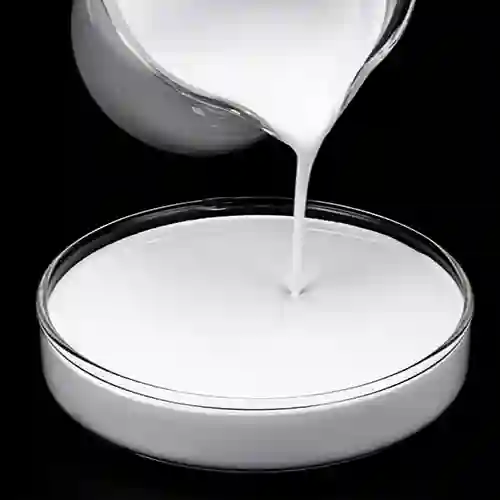Hebei Messi Biology Co., Ltd. stated that when the fluid powdered magnesium oxide is mixed or dry-ground in the presence of a small amount of water, a highly efficient hydration reaction will occur to generate powdered magnesium hydroxide; when the product is aged in the presence of water, the hydration efficiency is greatly improved, and powdered magnesium hydroxide is efficiently generated. When a catalyst and/or a dispersant is added to the mixing system or the dry-ground system, the hydration efficiency and water dispersibility can be further improved.
When preparing slurry-like magnesium hydroxide, there is no particular restriction on the order of adding water and dispersant. A dispersant (preferably a polymer surfactant) can be added to the aqueous suspension of magnesium hydroxide, and a mixture of water and dispersant can also be added to the powdered magnesium hydroxide; the powdered magnesium hydroxide can also be treated with a dispersant and then water can be added; and the above components can also be mixed simultaneously to disperse the magnesium hydroxide in water. The above dispersion and mixing can be carried out by conventional methods such as stirring, oscillation, and ultrasonic irradiation.

Dispersants are usually polymer surfactants. The magnesium hydroxide aqueous suspension obtained by adding polymer surfactants has the characteristics of high dispersion stability, high concentration and low viscosity. This slurry has high operability in storage and pipeline transportation. Moreover, due to the high dispersion stability and dilution stability, it is easy to prepare the magnesium hydroxide aqueous suspension of the required concentration.
Polymer surfactants include anionic surfactants and nonionic surfactants. Anionic surfactants include polyacrylic acid, polymethacrylic acid, polystyrene sulfonic acid, and sulfated polyvinyl alcohol, which have a great effect on reducing the viscosity of aqueous slurries.
The viscosity of magnesium hydroxide slurry is reduced by using 0.1%-5.0% (by weight) polyacrylic acid with a pH value of about 80-120; anionic polymers and copolymers are used to reduce the viscosity of magnesium hydroxide slurry and increase its stability; light magnesium oxide (800μm), NaOH (3.3%), carboxymethyl cellulose (0.2%), acetic acid (4.0%), acid sodium sulfite (4.0%), sodium polyacrylate (2.0%) are added, and a slurry-like magnesium hydroxide with good dispersibility can be obtained after a aging process.
In order to improve the viscosity, stability and fluidity of the aqueous slurry, a method for preparing an aqueous slurry of magnesium hydroxide by stirring and mixing magnesium hydroxide, anionic polymer dispersant and water-soluble alkali metal salt. A method for preparing an activated magnesium hydroxide by adding magnesium oxide to a warm aqueous solution of an anionic surfactant containing an alkali metal salt of a fatty acid as a main component; heating and digesting it simultaneously.
